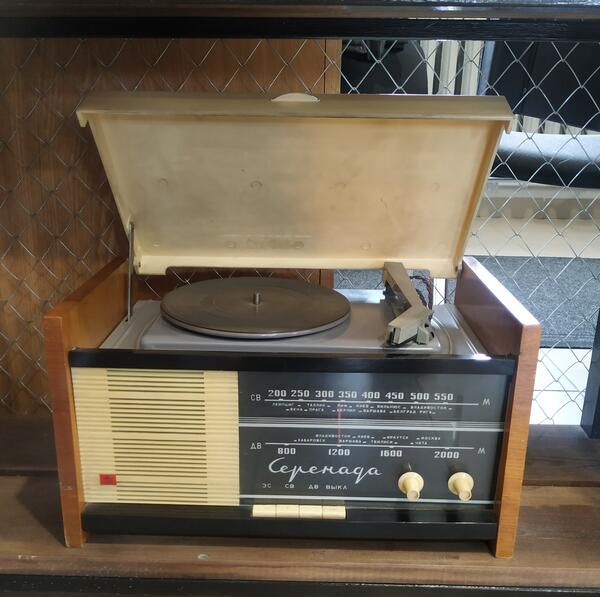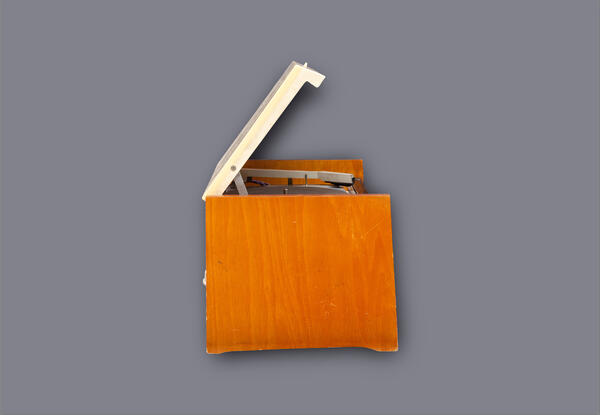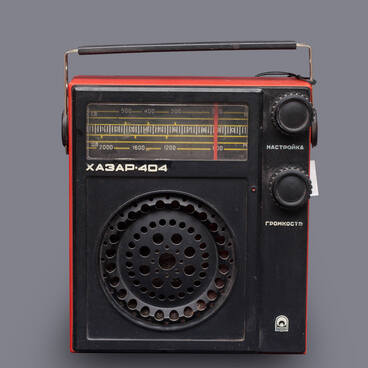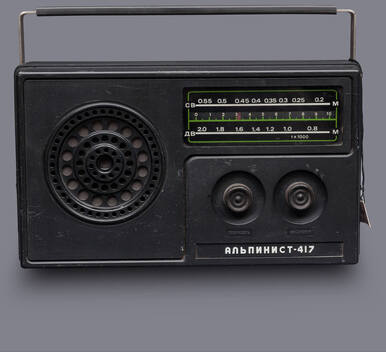In the Soviet Union, the most common radio receiver was considered a vital necessity. In the 1950s and 1960s, more advanced equipment began to spread across the country; those were “radiolas”, although the first one had been made in the USSR as early as in the late 1930s.
The term “radiola” was adopted to refer to a device that combined a radio receiver and an electric record player in the same housing. The name was taken from the Radiola brand offered by the RCA company in the USA, though over there the device was known as a “radiogram”.
The manufacture of radiolas in the USSR was established at the Alexandrov, Voronezh, Riga, and Izhevsk radio factories, as well as in Leningrad, Kharkiv, and Novosibirsk. The Vladivostok-based Radiopribor factory had always been a large defense enterprise, yet it also made non-military products. The manufacture of home audio equipment began there in 1953. Exactly ten years later, the first locally produced radiola was put into mass production.
The compact AC-powered class IV desktop valve-tube radiola Serenada was a radio receiver combined with an electric record player EPU-5. The original model was produced for 10 years. The device could receive radio stations in the long- and medium-wave frequency bands. The weight of the radiola was 10 kg.
Specifications of the receivers allowed listening to music in the range of “cleaner” frequencies, ultra-short waves (USW). Through the hiss and noise of radio interference, Soviet citizens could reach out to foreign radio stations and listen to Western music that was out of the airwaves in the USSR. The frequency band was selected by pressing the appropriate key.
The record player was hidden under a cover to protect it from dust. The record player had three speeds: 33, 45, and 75 revolutions per minute; the motor was turned on semi-automatically and shut down automatically due to an “auto stop” system.
The Serenada radiola was powered from AC mains (127/220 V). Power consumption was not more than 35 W during radio reception, and 50 W when playing records. The last radiola serially produced in the former Soviet Union was the Serenada RE-209, which was released in Vladivostok in 1992.
The term “radiola” was adopted to refer to a device that combined a radio receiver and an electric record player in the same housing. The name was taken from the Radiola brand offered by the RCA company in the USA, though over there the device was known as a “radiogram”.
The manufacture of radiolas in the USSR was established at the Alexandrov, Voronezh, Riga, and Izhevsk radio factories, as well as in Leningrad, Kharkiv, and Novosibirsk. The Vladivostok-based Radiopribor factory had always been a large defense enterprise, yet it also made non-military products. The manufacture of home audio equipment began there in 1953. Exactly ten years later, the first locally produced radiola was put into mass production.
The compact AC-powered class IV desktop valve-tube radiola Serenada was a radio receiver combined with an electric record player EPU-5. The original model was produced for 10 years. The device could receive radio stations in the long- and medium-wave frequency bands. The weight of the radiola was 10 kg.
Specifications of the receivers allowed listening to music in the range of “cleaner” frequencies, ultra-short waves (USW). Through the hiss and noise of radio interference, Soviet citizens could reach out to foreign radio stations and listen to Western music that was out of the airwaves in the USSR. The frequency band was selected by pressing the appropriate key.
The record player was hidden under a cover to protect it from dust. The record player had three speeds: 33, 45, and 75 revolutions per minute; the motor was turned on semi-automatically and shut down automatically due to an “auto stop” system.
The Serenada radiola was powered from AC mains (127/220 V). Power consumption was not more than 35 W during radio reception, and 50 W when playing records. The last radiola serially produced in the former Soviet Union was the Serenada RE-209, which was released in Vladivostok in 1992.






